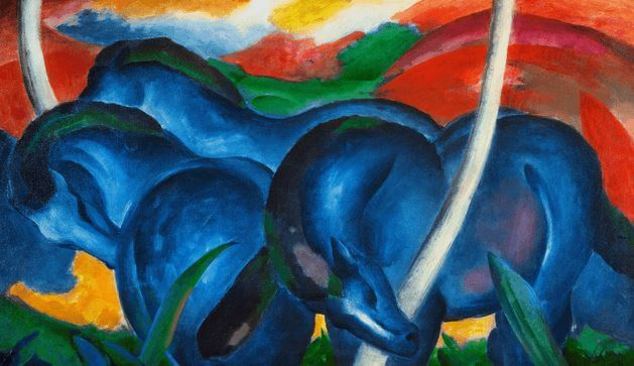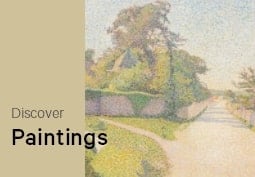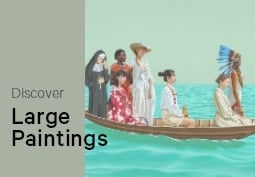Articles and Features
Art Movement: German Expressionism
By Shira Wolfe
“What I want to produce is something compelling, something full, an excitement and intoxication of color – something powerful.”
Ernst Ludwig Kirchner
At the start of the twentieth century, Expressionism emerged as an international tendency and art movement, spanning art, literature, music, theatre, film, and architecture. The artists’ aim was to express their emotional experiences, instead of focusing on portraying physical reality. Germany, along with France, Austria, and Norway, was an important center of the development of Expressionism. German Expressionism was divided into two main groups of artists: Die Brücke (the bridge), led by Ernst Ludwig Kirchner, and Der Blue Reiter (The Blue Rider), led by Franz Marc and Wassily Kandinsky.
Key dates: 1905-1920
Key regions: Germany
Keywords: self, psyche, body, sexuality, nature, spirit, emotions, mysticism, distortion of reality, exaggeration, heightened use of color
Key artists: Paula Modersohn-Becker, Ernst Ludwig Kirchner, Franz Marc, Wassily Kandinsky, Emil Nolde, Fritz Bleyl, Erich Heckel, Karl Schmidt-Rottluff, Paul Klee, Gabriele Münter, Alexej von Jawlensky, Marianne von Werefkin and August Macke.
Key characteristics: emotion, free sexuality, heightened use of color, spirituality
German Expressionism: definition & characteristics
German Expressionist artists found inspiration in mysticism, the Middle Ages, primitivism, and the philosophical thought of Nietzsche. These artists were concerned with evoking powerful reactions to their art by using bright colors and jagged brushstrokes, leaving behind previous expectations of aesthetically pleasing and easy-to-process art. They wished to escape the confines of modern middle-class life by exploring a heightened use of color, a direct, simplified approach to form, and free sexuality in their work.
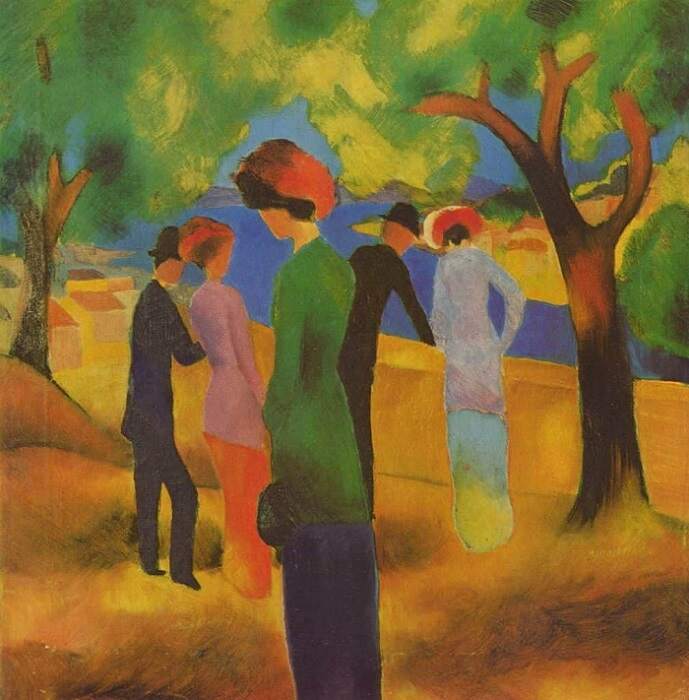
Die Brücke
Two main groups of artists formed the core of German Expressionism: the artists who formed Die Brücke and Der Blaue Reiter. Die Brücke was a collective of artists formed in Dresden in 1905, who were opposed to the bourgeois social order of Germany. The founding members were Ernst Ludwig Kirchner, Fritz Bleyl, Erich Heckel and Karl Schmidt-Rottluff. They chose their name inspired by a passage in Nietzsche’s Thus Spoke Zarathustra, wanted to convey their wish to bridge the past and the present.
Der Blaue Reiter
In 1911, Wassily Kandinsky and Franz Marc formed Der Blaue Reiter, with an aim to transcend the mundane by pursuing the spiritual value of art. They also attempted to break down the boundaries between what people considered high art, children’s art, folk art, and ethnography. Der Blaue Reiter derives its name from the recurring theme of a rider on horseback, which appeared in Kandinsky’s painting at the time. Kandinsky and Marc also shared a love of the color blue, which they considered a spiritual color. Other artists associated with the movement were Paul Klee, Gabriele Münter, Alexej von Jawlensky, Marianne von Werefkin, and August Macke. Der Blaue Reiter did not last very long and dissolved at the start of WWI in 1914 since Franz Marc was killed in combat and Wassily Kandinsky was forced to move back to Russia.
Another important German Expressionist painter was Paula Modersohn-Becker (1876-1907). She is considered one of the most important representatives of early Expressionism and is known as the first female painter to paint nude self-portraits. In her short life (she died at the age of 31) she painted over 700 paintings and made over 1000 drawings. Inspired by trips to Paris, where she came face to face with the color palette and expressive brushwork of the French avant-garde (Cézanne, Gauguin, Van Gogh), she started incorporating more color into her work. As such, she became one of the first German artists who worked in the Expressionist style.
German Expressionism in the Arts
Driven by a big interest in the relationship between art and society, German Expressionism encompassed many different fields, including painting, architecture, and films.
Painting & Sculpture
Famous German Expressionist paintings are Franz Marc’s Blue Horse I (1911), Wassily Kandinsky’s The Blue Rider (1903), Ernst Ludwig Kirchner’s Seated Girls (1910) and Self-Portrait as a Soldier (1915), and the early works of Paul Klee, who was associated with Der Blaue Reiter, as well as several other 20th century movements. What these Expressionists had in common was their depiction of inner worlds, emotions, psychology, and spirituality, as well as a spontaneous and intense use of color and brushstrokes to convey their intuitive messages.
Films
German Expressionism developed in an important way in cinema. Initially born out of Germany’s isolation during the 1910s and the government ban on foreign films, the movies soon started to gain in popularity and spread to an international audience. As in Expressionist paintings, Expressionist films were concerned with conveying the inner, subjective experience of the characters. These films can be characterized by their absurd elements and highly stylized and bold aesthetics. Two of the most famous films of the time were Fritz Lang’s Metropolis (1927) and Robert Wiene’s The Cabinet of Dr. Caligari (1920).
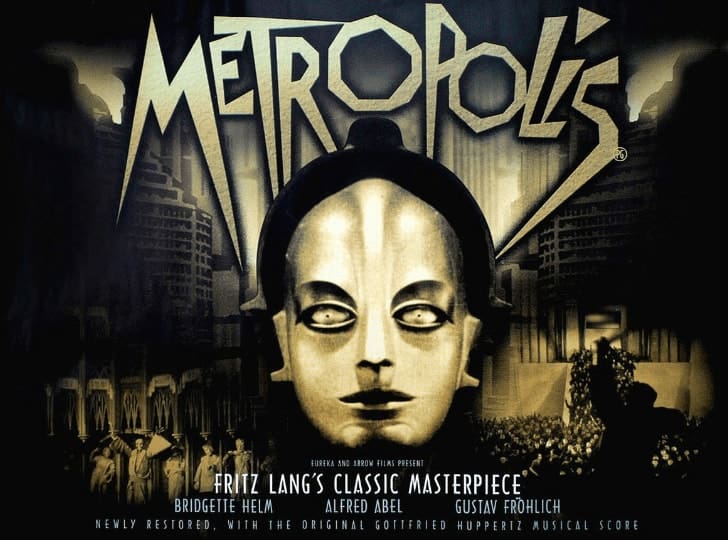
Architecture
Expressionist architecture was characterized by an early-modernist adoption of new materials, formal innovation, and unusual forms. Due to limited economic conditions after the First World War, many commissions between 1914 and the mid-1920s remained unrealized as projects on paper. Examples are Bruno Taut’s Alpine Architecture and Hermann Finsterlin’s Formspiels. Other important Expressionist architects include Walter Gropius, Mies van der Rohe, and Hans Scharoun. Early Expressionist architecture was influenced by Art Nouveau, while the post-1910 architecture is closely connected to Art Deco (such as the architecture of the Amsterdam School).
Literature
In literature, Expressionist writers wished to convey their ideas through a totally new style. They explored representative symbolic characters instead of fully developed individualized characters and placed the emphasis on the internal mental state of the character. Notable forerunners of Expressionist drama were August Strindberg and Frank Wedekind, while the first fully Expressionist play is considered to be Reinhard Johannes Sorge’s Der Bettler from 1912. Other important Expressionist playwrights were Ernst Toller, Fritz von Unruh, Georg Kaiser, Paul Kornfeld, and Reinhard Goering. In poetry, writers sought an ecstatic lyricism, eliminating narrative and description to get to the essence of feeling. A dominant theme was the anxiety about urban life and apocalyptic visions of the collapse of civilization.
Dance
Expressionism also found its way into dance, as a protest against artistic stagnation and the old-fashioned ballet tradition. In German, it was called Ausdruckstanz. The new type of dance was described as the art of movement, showing more spirit and emotion. Improvisation played a key role. Some of the forerunners of Expressionist dance in Europe were Hertha Feist, Clotilde von Derp, Hilde Holger, Mary Wigman, and Jo Mihaly.
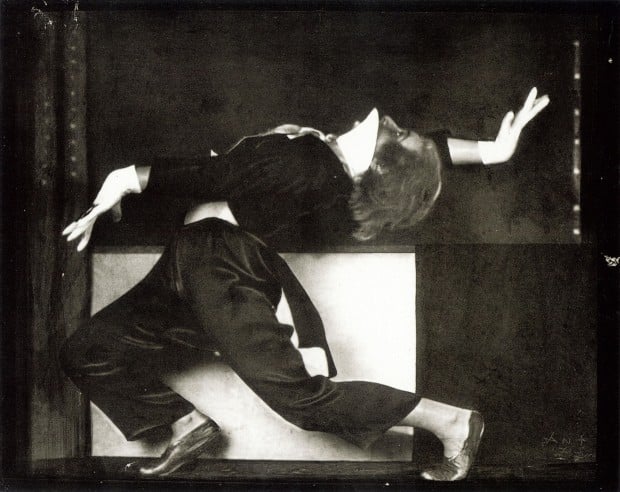
The Legacy of German Expressionism
The legacy of German Expressionism can especially be seen in contemporary movies. Director Tim Burton is known for his Expressionist style. For example, his movies Edward Scissorhands and The Nightmare Before Christmas reference The Cabinet of Dr. Caligari in style and setting.
Relevant sources to learn more
Read more on Artland Magazine
Expressionism, an overview of the art movement
The Shows That Made Contemporary Art History: The First Exhibition Of ‘Der Blaue Reiter’
Female Iconoclasts: Paula Modersohn-Becker
Other relevant sources
Watch the restored version of ‘Metropolis’ on YouTube

